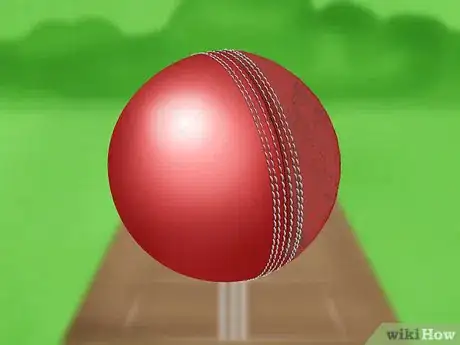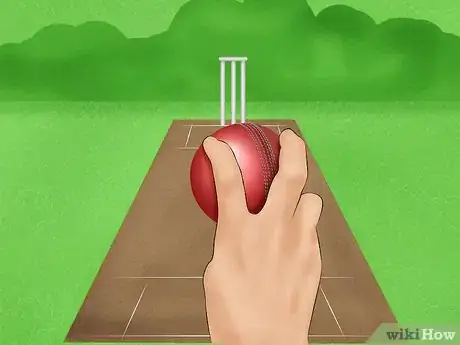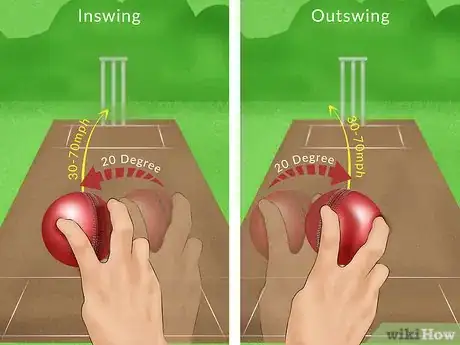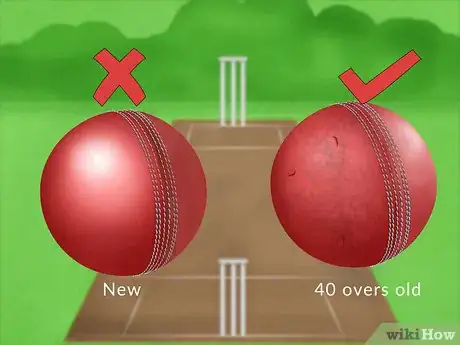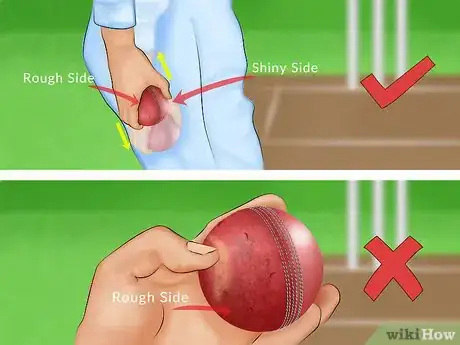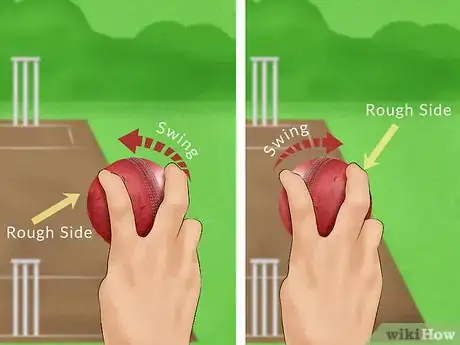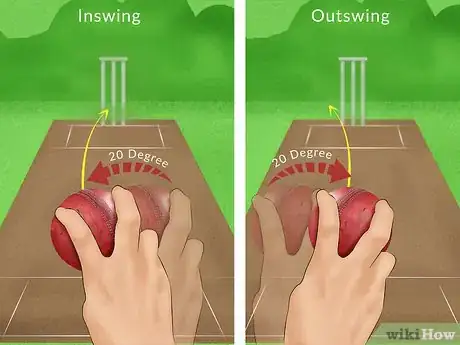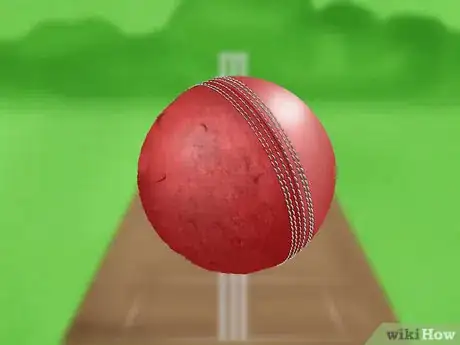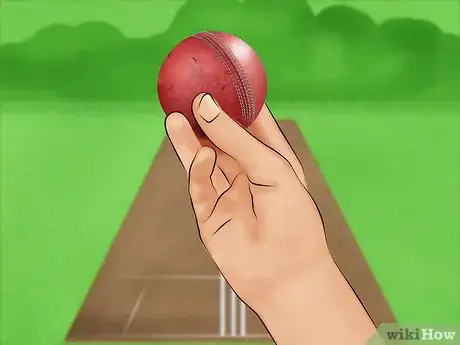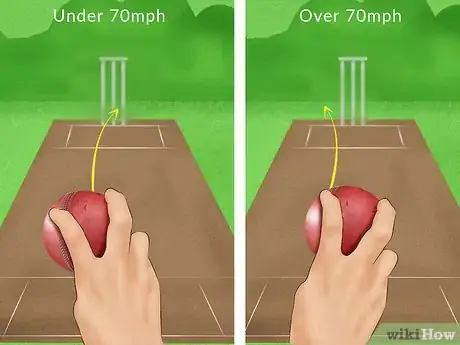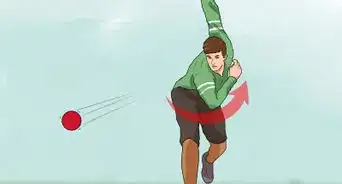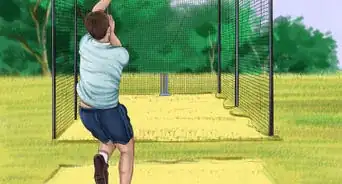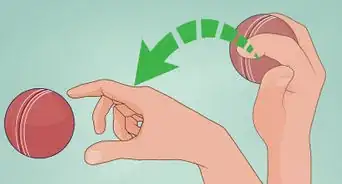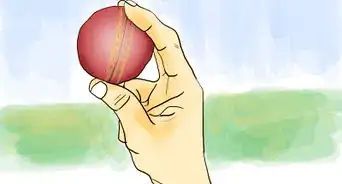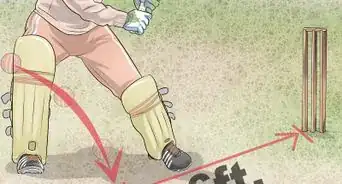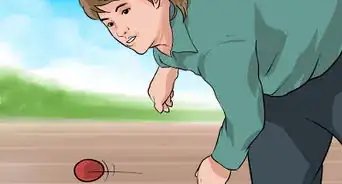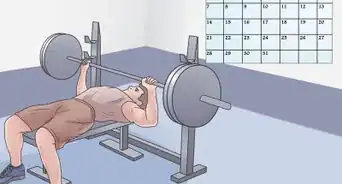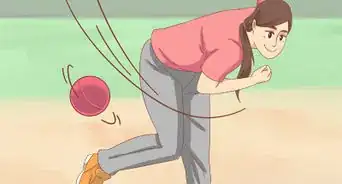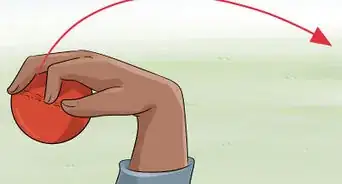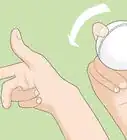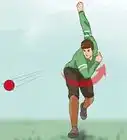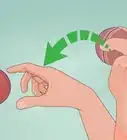wikiHow is a “wiki,” similar to Wikipedia, which means that many of our articles are co-written by multiple authors. To create this article, 21 people, some anonymous, worked to edit and improve it over time.
There are 8 references cited in this article, which can be found at the bottom of the page.
wikiHow marks an article as reader-approved once it receives enough positive feedback. This article received 16 testimonials and 84% of readers who voted found it helpful, earning it our reader-approved status.
This article has been viewed 304,004 times.
Learn more...
The basic idea of swing bowling is to get the cricket ball to swing sideways as it moves towards the batsman. The most important factors in achieving this are the amount of wear and tear on the ball, the speed at which it is bowled, and the bowler’s grip. A swing bowler can use a conventional swing, a reverse swing, or a contrast swing.
Steps
Bowling with Conventional Swing
-
1Use a new ball. Cricket balls swing best before they experience any wear and tear. It should have a prominent seam, and one side that is very shiny.
-
2Hold the ball along the seam. Grip it with your middle and index fingers on either side of the seam, with the ball resting on your thumb and third finger. The shiny side should be facing in the direction of the batsman.[1]Advertisement
-
3Release the ball with the seam pointing in the direction of the swing. A ball that swings from the leg side toward the off side is an inswing, and a ball that swings from the off side toward the leg side is an outswing.[2] [3]
- To bowl an inswing, release the ball with the seam pointed at about a 20 degree angle towards fine leg.[4] [5] The last point of contact with the ball should be your middle finger.[6]
- To bowl an outswing, release the ball with the seam pointed at about a 20 degree angle towards the slip fielders.[7] [8] The last point of contact with the ball should be your index finger.[9]
- A conventional swing will work best between 30 and 70 mph.
Bowling with Reverse Swing
-
1Use a ball 40 or more overs old. A new ball will swing naturally in a conventional direction, but at about this age, wear on ball changes its aerodynamics. It begins to swing in opposite direction of seam, towards the shine.[10]
-
2Keep the ball in good shape. Reverse swinging works best when the smooth side of the ball is very smooth, the rough side is very rough, and the seam is prominent.[11]
- Continually polish the smooth side of the ball during play. Keep in mind, however, that scratching the rough side constitutes tampering, and is illegal.
-
3Hold the ball along the seam. Grip it with your middle and index fingers on either side of the seam, with the ball resting on your thumb and third finger. The rough side should face the direction of the swing.[12]
-
4Bowl as you would a conventional swing, but with the sides of the ball reversed. This means the shiny side will now be facing away from the batsman. The difference between a conventional swing and a reverse swing is that in the former, the ball swings in the direction of the seam, while in the latter it swings in the opposite direction.[13]
- To bowl an inswing, release the ball with the seam pointed at about a 20 degree angle towards the slip fielders.[14] [15] The last point of contact with the ball should be your middle finger.[16]
- To bowl an outswing, release the ball with the seam pointed at about a 20 degree angle towards fine leg.[17] [18] The last point of contact with the ball should be your index finger.[19]
- Bowl hard. The faster you are able to bowl, the more effectively you will be able to achieve a reverse swing. The speed necessary also depends on the state of the ball; the rougher the rough side of the ball is, the less speed you will need.
Bowling with Contrast Swing
-
1Use a ball with a prominent seam. As with conventional and reverse swings, one side should be distinctly shiny, and the other side distinctly rough. Keep the ball as dry as possible.[20]
-
2Hold the ball along the seam. Grip it with your middle and index fingers on either side of the seam, with the ball resting on your thumb and third finger.
-
3Bowl with the seam pointing straight down the pitch. The direction of the swing will be determined by the speed at which you throw.
Community Q&A
-
QuestionWhere can I find a video that shows the wrist and the grip during the swing?
 Community AnswerTry YouTube. Look for a master class by someone great at swing bowling such as James Anderson or Wasim Akram.
Community AnswerTry YouTube. Look for a master class by someone great at swing bowling such as James Anderson or Wasim Akram. -
QuestionHow can I improve my batting?
 Community AnswerPractice everyday. Focus on the ball and play the shot in the direction where balls come.
Community AnswerPractice everyday. Focus on the ball and play the shot in the direction where balls come. -
QuestionI am trying to swing the ball but I cannot. Is it my problem, or the ball's?
 Community AnswerA conventional swing should be done with a new ball, a reverse swing should be done with an old ball, and in a conventional swing you can use any of them.
Community AnswerA conventional swing should be done with a new ball, a reverse swing should be done with an old ball, and in a conventional swing you can use any of them.
References
- ↑ http://news.bbc.co.uk/sportacademy/hi/sa/cricket/skills/newsid_3231000/3231567.stm
- ↑ https://www.youtube.com/watch?v=bbqbg8PiBl4
- ↑ http://www.topendsports.com/sport/cricket/technique-swing.htm
- ↑ http://www.espncricinfo.com/magazine/content/story/258645.html
- ↑ http://cricketsecrets.com/2010/10/successful-swing-bowling-tips/
- ↑ https://www.youtube.com/watch?v=cu4uKWWTMUo
- ↑ http://www.espncricinfo.com/magazine/content/story/258645.html
- ↑ http://cricketsecrets.com/2010/10/successful-swing-bowling-tips/
- ↑ https://www.youtube.com/watch?v=cu4uKWWTMUo
- ↑ http://www.espncricinfo.com/magazine/content/story/258645.html
- ↑ http://www.espncricinfo.com/magazine/content/story/258645.html
- ↑ https://www.youtube.com/watch?v=cu4uKWWTMUo
- ↑ http://www.espncricinfo.com/magazine/content/story/258645.html
- ↑ http://www.espncricinfo.com/magazine/content/story/258645.html
- ↑ http://cricketsecrets.com/2010/10/successful-swing-bowling-tips/
- ↑ https://www.youtube.com/watch?v=cu4uKWWTMUo
- ↑ http://www.espncricinfo.com/magazine/content/story/258645.html
- ↑ http://cricketsecrets.com/2010/10/successful-swing-bowling-tips/
- ↑ https://www.youtube.com/watch?v=cu4uKWWTMUo
- ↑ http://www.espncricinfo.com/magazine/content/story/258645.html
- ↑ http://www.espncricinfo.com/magazine/content/story/258645.html
- ↑ http://www.espncricinfo.com/magazine/content/story/258645.html
- ↑ http://www.espncricinfo.com/magazine/content/story/258645.html
About This Article
If you want to add inswing to a cricket ball, hold the ball so the seam is between your index and middle fingers and so the shiny side of the ball faces the batsman. Then, angle the seam 20 degrees towards the batsman and swing as usual. Try to throw the ball between 30 and 70 miles per hour and it will swing toward the off side. Keep reading to learn how to bowl with a reverse swing or with a contrast swing!
